Atomic City, USA: how once-secret Los Alamos became a millionaire’s enclave
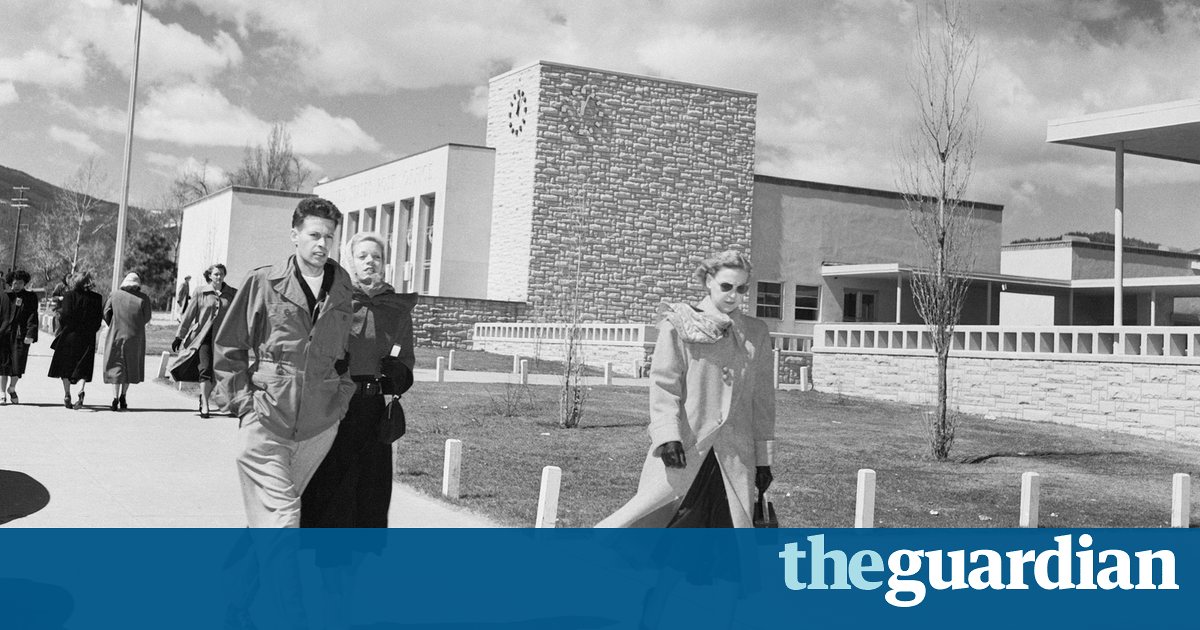
Home to the scientists who built the nuclear bomb, the company town of Los Alamos, New Mexico is today one of the richest in the country even as toxic waste threatens its residents and neighbouring Espaola struggles with poverty
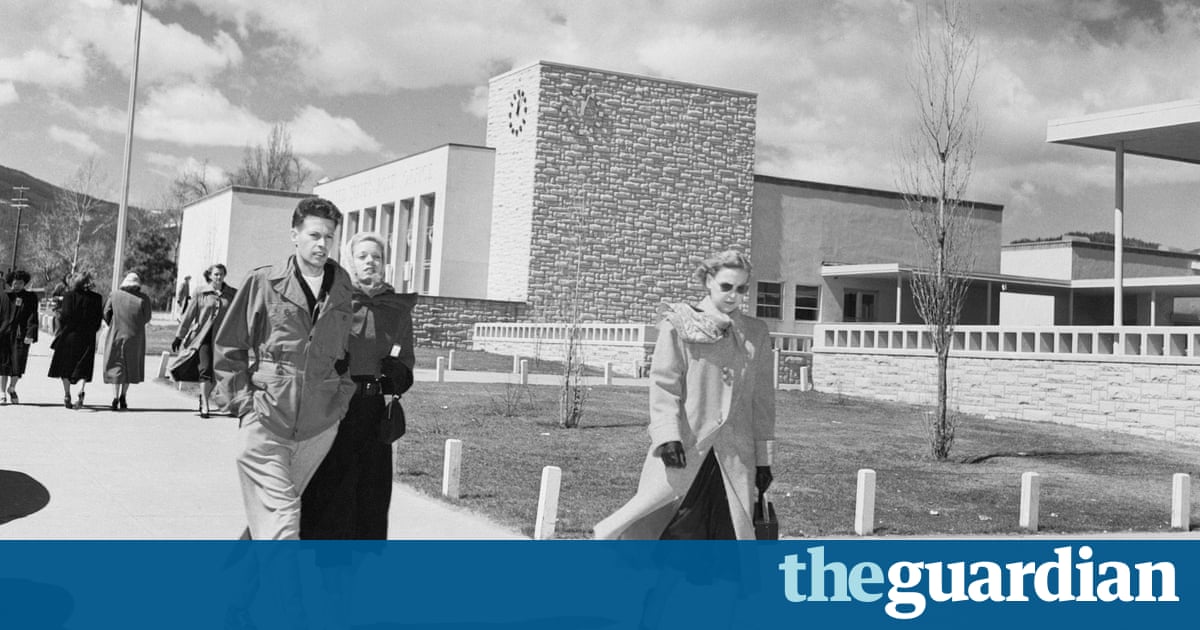
In August 1945, the US army dropped a secret over Japan: fully functional nuclear bombs, which instantly killed tens of thousands of people in Hiroshima and Nagasaki. More than 6,000 miles away, meanwhile, in northern New Mexico, one newspaper carried a headline with uniquely local flair.
Now They Can be Told Aloud These Stoories [sic] of the Hill blared a rushed edition of the Santa Fe New Mexican. The article revealed that Los Alamos a mysterious settlement, built atop a picturesque mesa had been instrumental in the creation of these new weapons of mass destruction.
Today, Los Alamos is a secret no longer: its a small community with about 18,000 people living in the main town and a suburb called White Rock. But the nuclear lab remains, and the city is still an island in many ways: an extraordinary pocket of wealth and privilege, surrounded by some of the poorest counties in New Mexico, one of the poorest states in America.
The city is also partly toxic. The nuclear research lab still disposes of radioactive waste, and an underground plume of hexavalent chromium a contaminant linked to increased risks of cancer and made famous by Erin Brockovich has been drifting from the lab. A September 2016 report from the labs environmental management office said it could take more than 20 years and nearly $4bn (3.3bn) to clean up decades-old nuclear waste in the area.
And yet Los Alamos has more millionaires per capita than almost anywhere else in the country.
Instant city
The city has always been unique. During the second world war, Los Alamos was the site of a classified research laboratory, built as part of the Manhattan Project to develop an atomic bomb. Along with Oak Ridge, Tennessee and Hanford, Washington, it was also home to a secret city built to house thousands of scientists, engineers and their families.
It was isolated, and it was also beautiful, which was something [J Robert] Oppenheimer used when he recruited people, says Jon Hunner, professor of history at New Mexico State University, referring to the theoretical physicist who led the Los Alamos lab.
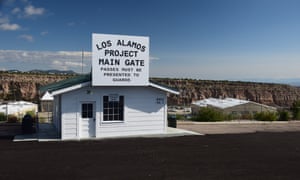
The goal, he explains, had been to build top secret, temporary research facilities in order to keep US nuclear scientists and their work away from prying eyes and ears.
Hunners 2007 book, Inventing Los Alamos, describes the birth of what he calls an instant city. In some ways, the story sounds similar to that of the hundreds of company towns built across the US in the late 19th and early 20th centuries, to provide labour for single industries: mining, coal and logging towns.
Except here the industry was nuclear weapons. And, officially, the town did not exist.
Those who lived in Los Alamos were forbidden to talk about it. The town was not mentioned on drivers licenses, birth certificates, or postal mail. The whole area was surrounded by fences, gates and guards.
Constructed almost overnight, much of the land was simply appropriated from traditional Hispanic homesteaders and Native American communities, as well as an elite private boys school that counted Gore Vidal as one of its famous alumni.
To guard its secret, Los Alamos was built to be almost completely self-contained. There were schools, a hospital, and theatres that doubled as dance halls on Saturdays and churches on Sundays. Housing was allocated according to ones rank at the lab. By the end of the war, it had a population of 6,000.
Everything was run by the Army Corps of Engineers. There were no private businesses in Los Alamos until the 1950s. Nobody could own property. Nobody could own their home, says Hunner. With its focus on the science behind the bomb, he describes it like a university town that was controlled by the military.
It was also shoddily constructed, he says, because it was only supposed to exist during the second world war. But then the cold war with the Soviet Union gave the US nuclear weapons programme, and Los Alamos, a new raison detre. Both were here to stay.
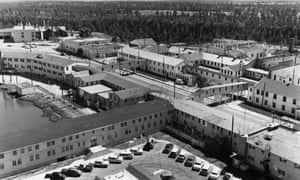
Its a stark example of the 1% and 99%
Today Los Alamos has become one of the richest cities in America. At least one in every nine people a whopping 12% of the population is thought to be a millionaire. Los Alamos also regularly tops the list in terms of the best education and lowest crime levels in the state. It has one of the countrys highest concentration of PhDs.
On the map of New Mexico, Los Alamos county created in 1949 is a tiny dot next to Rio Arriba, one of the largest counties in the state. In Los Alamos, average incomes are twice as high as those in Rio Arriba. A 2012 Census Bureau report said this was one of the largest wealth gaps between two neighbouring counties in America.
Just 30km from this affluent island is the town of Espaola. Here the median household income is $33,000 and almost 30% of the population live under the poverty line. For years it has also struggled with its reputation as the heroin overdose capital of America.
Hunner describes the disparity between Los Alamos and neighbouring towns as almost inevitable. Were really a poor state, he says. So you plop this federally supported research and development lab, where you have to pay people a lot of money to stay there, and of course theres going to be a disparity between the people who live there and the people in Espaola.
But, he adds, a lot of people who live in Espaola work in Los Alamos. In that whole northern New Mexico area, there is a big commute.
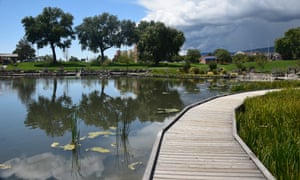
Others see the inequality between Los Alamos and neighbouring communities as a prime example of a common dynamic across the country and a reminder of how stories of wealth trickling down can be far-fetched.
Its a stark example of the proverbial 1% and the other 99%, says Jay Coghlan, sitting in a large reclining chair in the living room of his home in Santa Fe. A 45 minute drive south-east from Los Alamos, his home doubles as an office for Nuclear Watch New Mexico.
Neighbouring communities have not benefited much at all, with the obvious exception that theres jobs, he says. Benefits have been very insular and privileged to the nuclear enclave itself.
The environmental impact of living next door to a nuclear research lab is another sore issue. Some radioactive waste is still disposed of at the labs Area G compound (although this could end next year), and there is still so-called legacy waste, which has not been cleaned up and will take billions of dollars to address. The carcinogenic plume of hexavalent chromium, meanwhile, which was discovered 10 years ago, is migrating towards nearby Native lands and the regional aquifer.
Atomic City, USA
Los Alamos sits on a hill at more than 7,000ft (2,000 metres) above sea level. The single, steep road to the town winds through picturesque northern New Mexico: arid landscape punctuated with desert plants and native American pueblos, with the Jemez mountains in the background.
On a sunny September afternoon, the town is calm and peaceful. A perfectly landscaped and manicured pond is surrounded by a park of bright green grass. A young couple pushes a baby in a stroller.
Inside a supermarket in Los Alamos, there are fine wines on sale along with cigars, stored in a purpose-built humidor. The supermarkets indoor Atomic Bar serves a range of craft beers on tap. Nearby, a small strip mall houses a chocolatier, an acupuncturist, and a sensory deprivation flotation therapy clinic.
In the waiting room at a bank, there is a Sothebys catalogue of luxury real estate in Santa Fe, from where many of the labs better-paid employees commute. A grand new municipal building stands on the side of the main street much larger than one might expect in such a small town.

But while Los Alamos is clean and orderly with hints of privilege, its affluence is relatively understated. It doesnt look like one of the richest counties in the state, let alone the country.
Its not old wealth, says Heather McClenahan, executive director of the Los Alamos Historical Society. Its people who work at the lab. And if youve got two people who work at the lab, whove both got six-figure incomes, thats going to generate wealth in your family.
McClenahan has lived here for more than 15 years. Her husband does environmental work at the lab. Its a great place to raise kids, she says. Its a company town. Most families have at least one person working at the laboratory. There are fabulous schools. Its very safe.
And because its a small town, we dont have traffic problems, we dont have a lot of crime.
And yet references to war and nuclear weapons are everywhere. Atomic City Transit buses rumble down roads with names like Oppenheimer Drive and Trinity Street. Atomic City Salsa is on sale at a gift shop in the town centre, along with bumper stickers and playsuits for babies, including one with a mushroom cloud on the front, and the punchline (Ive been dropping BOMBS since Day 1) on the reverse.
Research at the lab today includes fields like climate change, supercomputing and astrophysics. But still nuclear weapons is the dominant subject.
Pete Sheehey, a Los Alamos county councillor, first moved to the town 30 years ago from California while finishing a PhD in physics. He described the community as very dependent on the one lab contract, but said that it is trying to encourage and keep spin-off companies in the area, so there will be more jobs independent of the lab contract. And we are working to increase tourism as well.

Los Alamos is part of the new Manhattan Project National Park, and a new mobile app released by the lab lets users explore the 1940s Atomic City. Already Los Alamos receives tens of thousands of visitors each year to see the place where the atomic bomb was developed, says McClenahan. Some of the biggest numbers are from Russia, Germany and Japan.
McClenahan says Los Alamos has always been conflicted about the impact of the research done here. From the beginning, she says, there were scientists who were so proud of not only the scientific work they did, but of saying We ended world war two. And then there were others who said, We just killed hundreds of thousands of people.
For decades, she adds, there was also a sense of Stay out of our town, were doing top-secret work and you cant come here. But attitudes have changed. Now, she says, people are thinking: How do we bring tourists to our tiny little town?
Espaola: Its complicated
Espaola is a 25 minute drive north-east of Los Alamos. It, too, is a small town, with a population of about 10,000. But, in many respects, it feels a world away from the nuclear island on the hill.
The road into Espaola passes by brightly painted murals and drive-thru fast food restaurants. Other buildings bear hand-painted signs on storefronts, selling animal feed, boots and party supplies for quinceaeras. Boldly coloured low-rider cars, which have become key cultural symbols of this part of New Mexico, rumble down the towns wide roads.
Sheehey, the Los Alamos councillor, says that thousands of people commute to Los Alamos each day from neighbouring communities like this one. Economic benefit is felt throughout the region, he says. Children from outside the county are allowed to attend Los Alamos schools, which still get a federal subsidy and are some of the best public schools in New Mexico.
The lab has also been generous in supporting education and other community programs in Espaola and other neighbouring communities, Sheehey adds. He gives the example of a free bus service through northern New Mexico, funded partly by a Los Alamos county program called Progress through Partnering.
Like many people in Espaola, Patricia Trujillo, 39, says she has always been connected to the lab in some way. When we talk about the company town its much wider than Los Alamos, she says. Its the whole valley.

As a child in the late 1980s, Trujillo says she remembers her teachers sending her and her classmates to wait by the side of the road and cheer as new scientific equipment was brought to Los Alamos by truck. They had us sit outside all day long, she says. Instead of getting us to question it, they had us cheering.
Her own grandmother worked in Los Alamos in the 1940s, as a house matron in charge of a dormitory for other women who worked in the then-secret citys households and offices. And Trujillo herself has worked at the lab, including as a technical writer after university.
There are small businesses in Espaola, she says that have also benefited from subcontracts to provide supplies for the lab.
But the word Trujillo chooses to describe Espaolas relationship with Los Alamos is complicated.
Now professor of literature and Chicano studies at Northern New Mexico College in Espaola, and head of the schools equity and diversity program, she explains: A lot of our middle class, our wealthier parents, will drive their kids to Los Alamos county every day, to send them to school there. But then we lose that parent base here.
Trujillo says Los Alamos has supported projects including those to write science curriculum for schools in Espaola. But these efforts have been piecemeal and problematic, she says, doing little to address structural inequalities between the two communities.
There is instead a pervasive hill-valley disparity, Trujillo argues, which impacts imaginations and limits peoples aspirations. The majority of manual labourers come from the Espaola valley … but theres no trickle down, she says. Its a multibillion dollar industry, but unfortunately theres a lot of inequity.
Secrecy, not safety
In Espaolas Valdez Park, Beata Tsosie Pea, 38, is sitting with her young son near a freshly terraced slope where she will soon help plant trees as part of a new community garden.
Pea was born in the nearby Santa Clara pueblo, and is coordinator of the environmental justice programme at Tewa Women United (TWU), a civil society organisation led by indigenous women in the area (Tewa is the name of a native language group). Trujillo is also on the board of TWU.
Pea describes the Los Alamos lab as intertwined with issues of power and injustice from the very beginning. Much of the land for the lab was taken from Native communities in the 1940s, in what she says started with temporary agreements, and understandings that it would be returned after the war.
Los Alamos is on all these sacred sites, ancestral sites. We knew not to develop there, to build there. We would never have done that, because we were put there as caretakers of the water and the land, she said.
There are also concerns about the labs environmental impact on neighbouring communities. Peas organisation is part of the Communities for Clean Water coalition created to monitor Los Alamoss impact on water for drinking, agriculture, sacred ceremonies, and a sustainable future.
The September 2016 report on nuclear waste came from the the labs own environmental management office. The 20-plus years and $4bn clean-up costs were criticised for being likely underestimates.
The [labs] location was chosen for its secrecy, not its safety. And now theres so much money, its seen as an investment they dont want to lose, says Pea, wondering aloud how many of Los Alamoss residents know on whose land they are, and that the privilege of living here comes with responsibility.
But, again, the word she chooses is complicated.
There needs to be a transition to a different mission [for the lab], to things like clean-up technologies, alternative energy, green energy, she argues. Protest groups come here and say Shut it down. But for us, its much more complicated, because our families are economically tied to the lab.
Travel for this story was supported by the Pulitzer Center on Crisis Reporting
Follow Guardian Cities on Twitter and Facebook and join the discussion